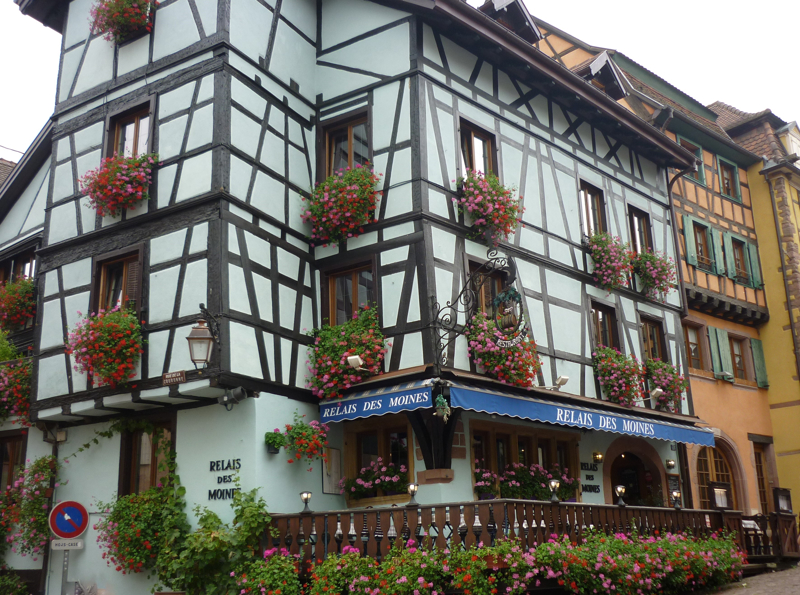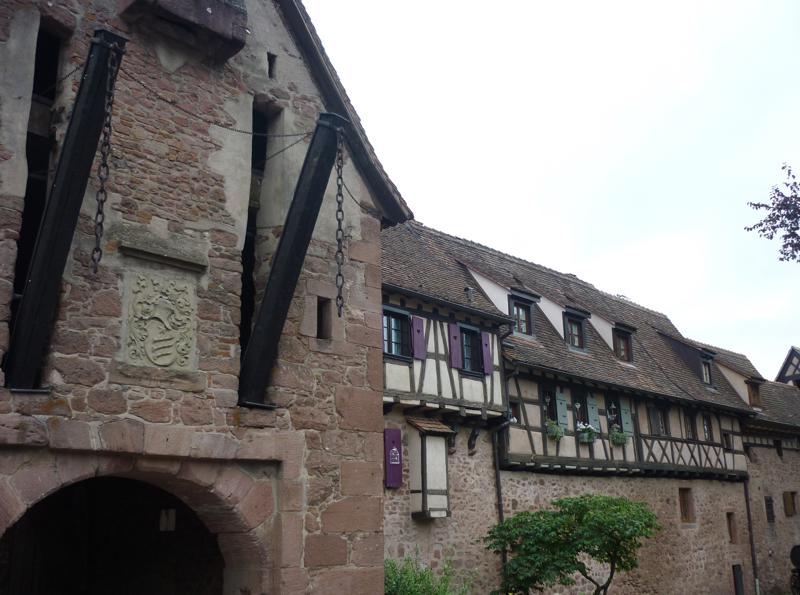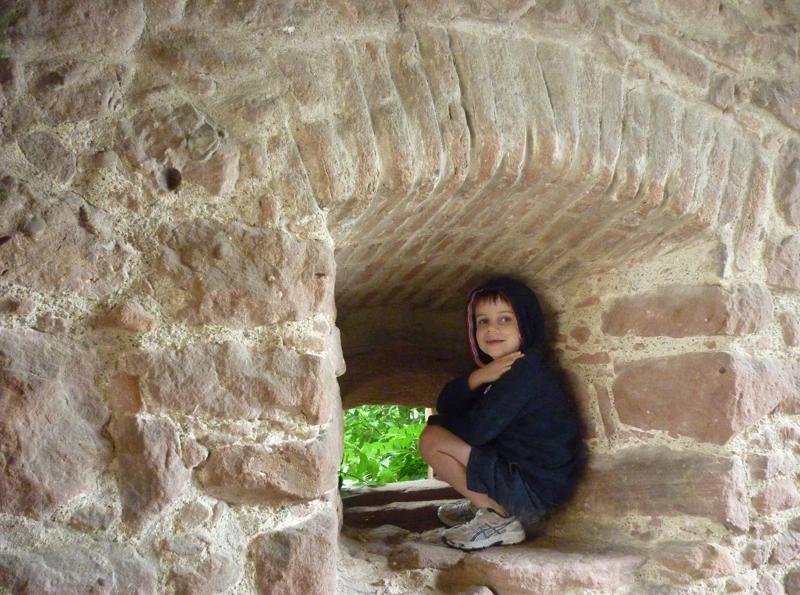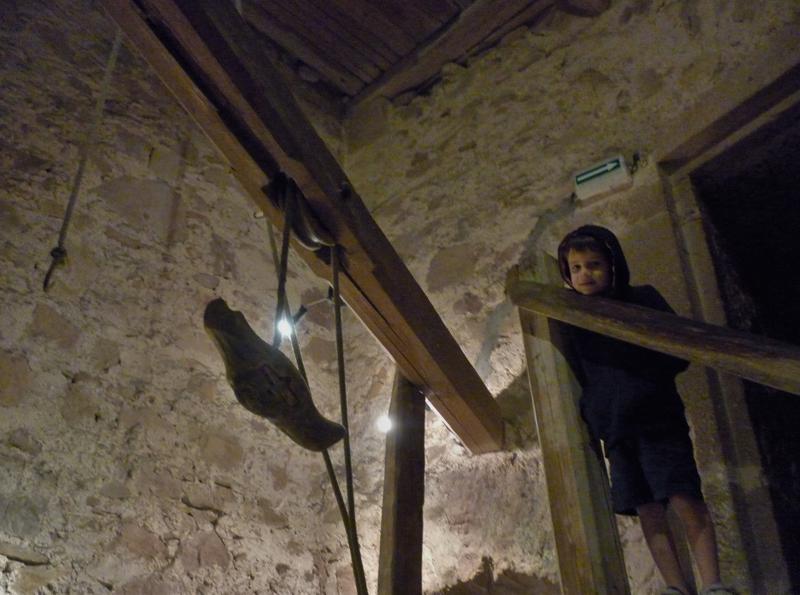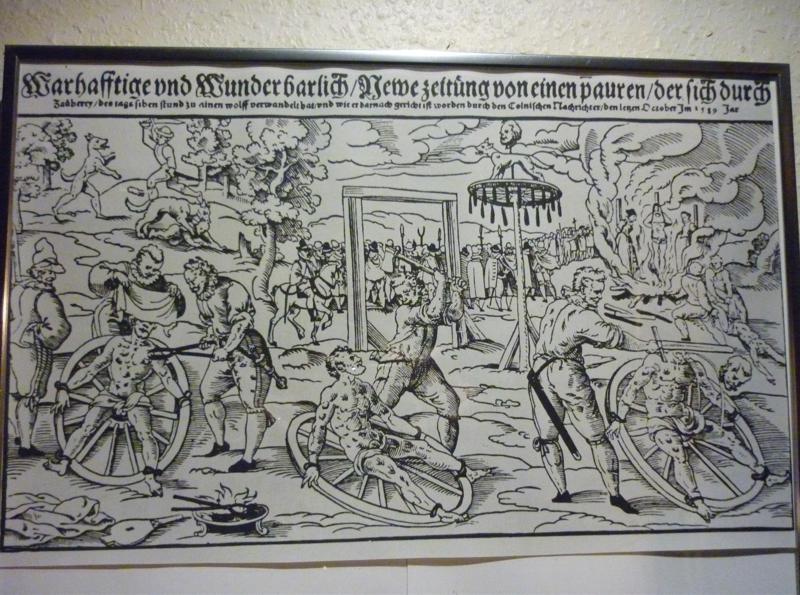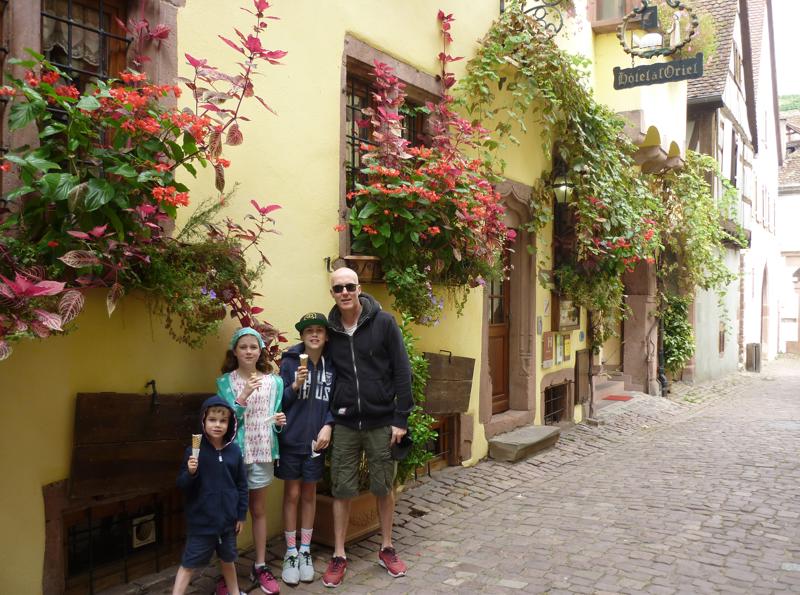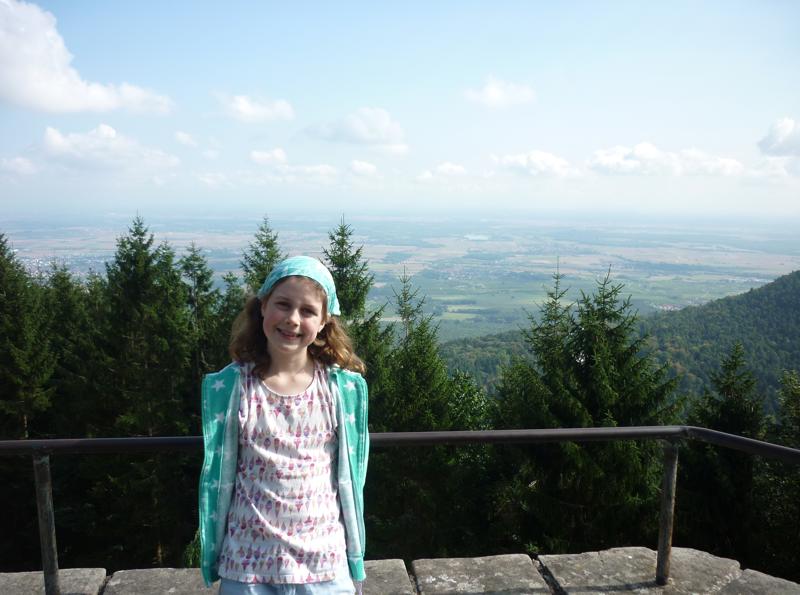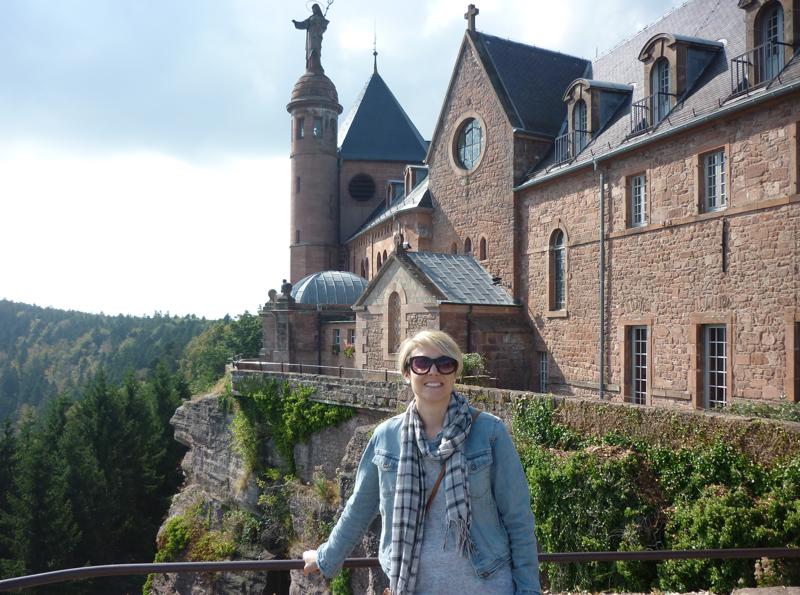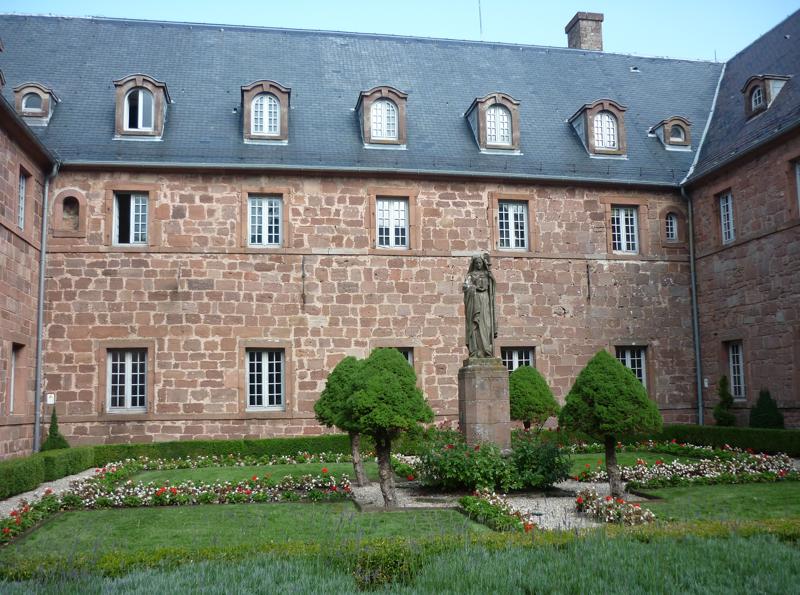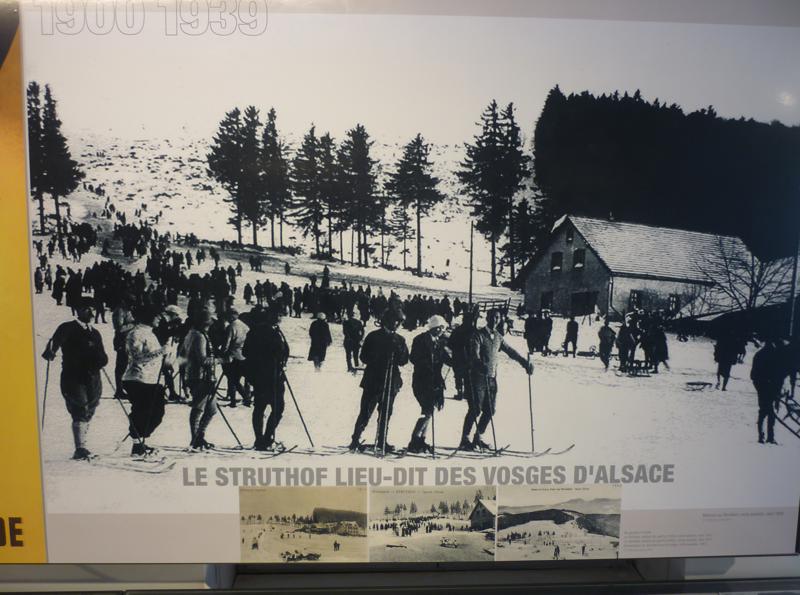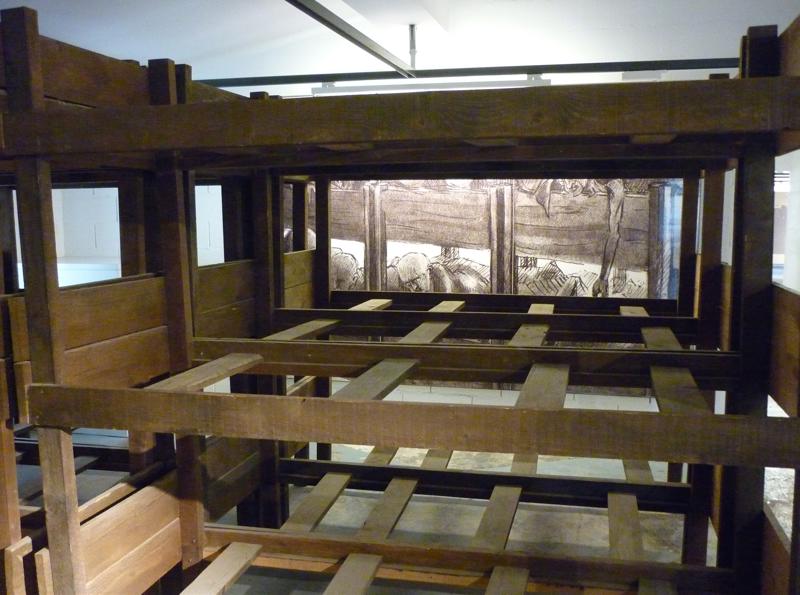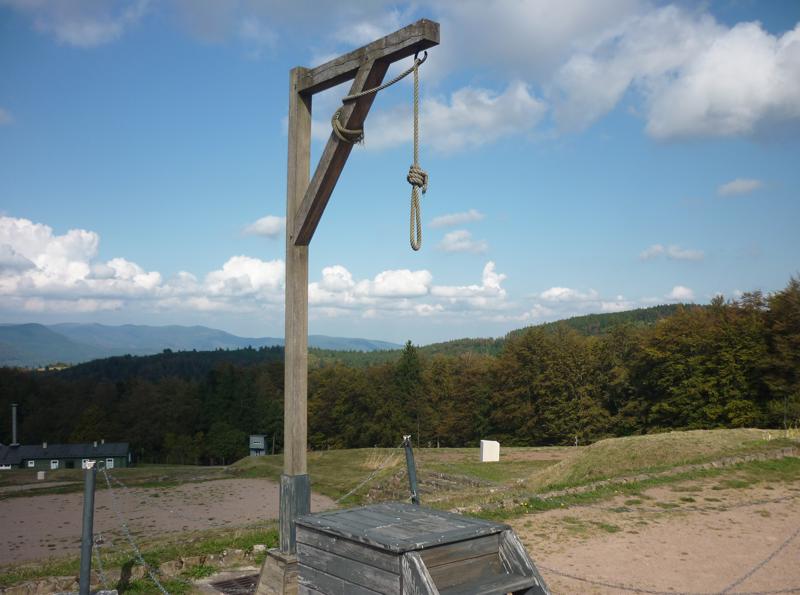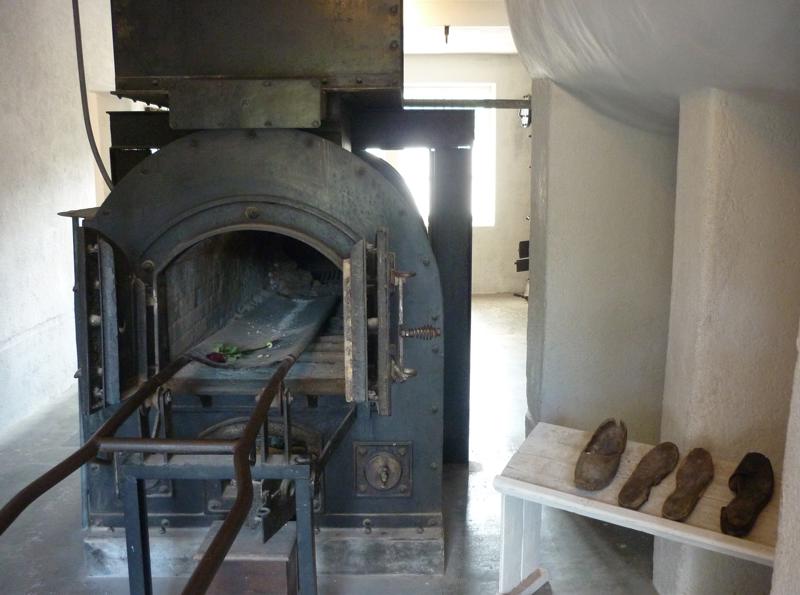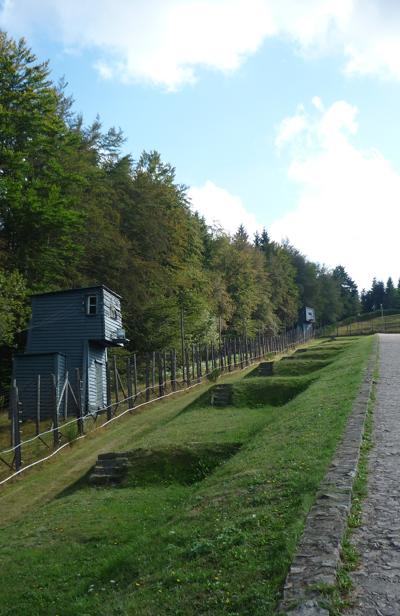Europe Trip
Today the forecast was for a mostly sunny day, and after another French breakfast we headed out for the little town of Riquwihr. This town is claimed to be one of the prettiest in France and it certainly meets that title. It’s a small, walled medieval village, with the sort of exposed timber beam houses from the 15th-18 centuries that we have here in Colmar. The only difference is that in Riquwihr there’s a consistency of housing style, and many are adorned with flowers and other decorations.
We wandered through the streets and the kids had their daily ice-cream, as we made our way up to the far end of the town. Here Oscar and I lost the others for three quarters of an hour, and during this time we decided to check out the Thieves Tower museum. For a cost of €4 we explored a tower on the corner of the older fortified inner wall which dates back to 1291. The exhibit included a deep unlit pit where prisoners were held prior to execution, a torture chamber, and several rooms where the guards lived. The executioner of the day was paid a very basic wage for his services; however he received a loading of around 500% if he was able to first extract a confession from the prisoner.
From Riquwihr we drove on to Mont Sainte-Odile Abbey, dating back to the 8th century and perched on the top of one of the most famous peaks of the Vosges mountain range in the Alsace region at a height of almost 1,000 meters. The Abbey offers superb views of the surrounding countryside, and we spent half an hour here resting over lunch and admiring the views. The Abbey and its library are also famous for a recent two-year period in which hundreds of rare books were stolen, despite the locked doors, changed locks, barred windows and isolation from the public. The police eventually captured the thief using CCTV footage. He was gaining access via a medieval era hidden passageway and spiral staircase terminating behind one of the library cupboards. He was given a fine and community service – he was to catalogue the books from the very library from which he was stealing.
From the Abbey we moved on to Natzwiller-Struthof Concentration Camp. The camp, set in a most picturesque position on another hilltop in the region, used to be a ski resort. When the Nazis took control of the region, they commandeered the property and converted it into the only concentration camp on French territory. Around 52,000 prisoners were held from 1941-1945, mostly from resistance movements in German occupied territories. The camp was a labour camp and transit camp – many prisoners came through this camp en-route to Auschwitz, or as the war progressed, to Dachau in safer German territory. It was also used as a death camp, with a mortality rate of almost 50%, however most of the deaths were caused by malnutrition, starvation or exposure. Executed prisoners were shot, hanged, or in some cases gassed.
The gas chambers were located about two kilometres down the road, and these were used for selective, rather than mass executions. Sanctioned by Heinrich Himmler, 86 Jewish victims were selected from Auschwitz and transferred to Natzwiller-Struthof a couple of weeks before execution. During this two week period, they were kept separate from the other prisoners, well fed, in order of be of average size when killed. Once gassed, the bodies were sent to German doctors and anthropologists at the University of Strasbourg, for examination in order to prove that the Jewish people were only a sub-race.
As a museum, it was a little disappointing. Everything was in French, and despite a good number of photos and pictures, it was difficult to get across the detail. There was one large hut used to display most of the exhibits, another hut was basically just a crematorium with a few other unused rooms. Another hut was a prison block, but there wasn’t much to see or look at. The modern reception / ticket building provided more information, in particular looking at all the different concentration camps in Europe with an overview of how they were used. We stayed here for a while before driving down the road to the gas chamber, which was really just a windowless room with a strong door, and some entry points for the gas.
Overall it was worth seeing, however the Imperial War Museum in London was far superior.
James Burnet
34 chapters
15 Apr 2020
Day 30
Riquewihr and Natzwiller Struthof
Today the forecast was for a mostly sunny day, and after another French breakfast we headed out for the little town of Riquwihr. This town is claimed to be one of the prettiest in France and it certainly meets that title. It’s a small, walled medieval village, with the sort of exposed timber beam houses from the 15th-18 centuries that we have here in Colmar. The only difference is that in Riquwihr there’s a consistency of housing style, and many are adorned with flowers and other decorations.
We wandered through the streets and the kids had their daily ice-cream, as we made our way up to the far end of the town. Here Oscar and I lost the others for three quarters of an hour, and during this time we decided to check out the Thieves Tower museum. For a cost of €4 we explored a tower on the corner of the older fortified inner wall which dates back to 1291. The exhibit included a deep unlit pit where prisoners were held prior to execution, a torture chamber, and several rooms where the guards lived. The executioner of the day was paid a very basic wage for his services; however he received a loading of around 500% if he was able to first extract a confession from the prisoner.
From Riquwihr we drove on to Mont Sainte-Odile Abbey, dating back to the 8th century and perched on the top of one of the most famous peaks of the Vosges mountain range in the Alsace region at a height of almost 1,000 meters. The Abbey offers superb views of the surrounding countryside, and we spent half an hour here resting over lunch and admiring the views. The Abbey and its library are also famous for a recent two-year period in which hundreds of rare books were stolen, despite the locked doors, changed locks, barred windows and isolation from the public. The police eventually captured the thief using CCTV footage. He was gaining access via a medieval era hidden passageway and spiral staircase terminating behind one of the library cupboards. He was given a fine and community service – he was to catalogue the books from the very library from which he was stealing.
From the Abbey we moved on to Natzwiller-Struthof Concentration Camp. The camp, set in a most picturesque position on another hilltop in the region, used to be a ski resort. When the Nazis took control of the region, they commandeered the property and converted it into the only concentration camp on French territory. Around 52,000 prisoners were held from 1941-1945, mostly from resistance movements in German occupied territories. The camp was a labour camp and transit camp – many prisoners came through this camp en-route to Auschwitz, or as the war progressed, to Dachau in safer German territory. It was also used as a death camp, with a mortality rate of almost 50%, however most of the deaths were caused by malnutrition, starvation or exposure. Executed prisoners were shot, hanged, or in some cases gassed.
The gas chambers were located about two kilometres down the road, and these were used for selective, rather than mass executions. Sanctioned by Heinrich Himmler, 86 Jewish victims were selected from Auschwitz and transferred to Natzwiller-Struthof a couple of weeks before execution. During this two week period, they were kept separate from the other prisoners, well fed, in order of be of average size when killed. Once gassed, the bodies were sent to German doctors and anthropologists at the University of Strasbourg, for examination in order to prove that the Jewish people were only a sub-race.
As a museum, it was a little disappointing. Everything was in French, and despite a good number of photos and pictures, it was difficult to get across the detail. There was one large hut used to display most of the exhibits, another hut was basically just a crematorium with a few other unused rooms. Another hut was a prison block, but there wasn’t much to see or look at. The modern reception / ticket building provided more information, in particular looking at all the different concentration camps in Europe with an overview of how they were used. We stayed here for a while before driving down the road to the gas chamber, which was really just a windowless room with a strong door, and some entry points for the gas.
Overall it was worth seeing, however the Imperial War Museum in London was far superior.
